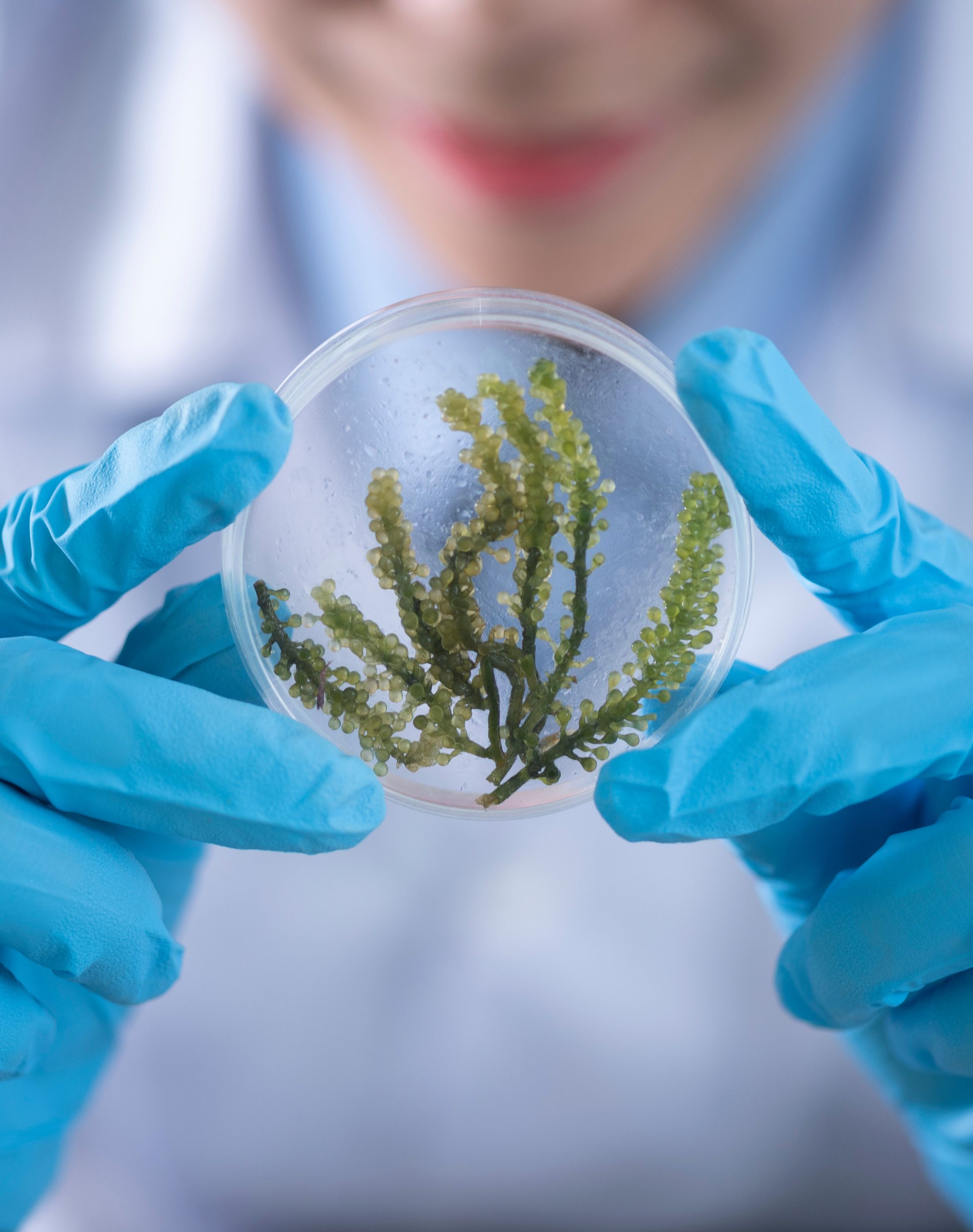Biological engineering, or bioengineering, combines the principles of biology with tools of engineering in order to help create products that are both usable and economically viable.
Bioengineering is a powerful tool allowing us to rectify the damage that human activity, such as agriculture, livestock farming, traffic, and chemical industries have caused to the planet. Bioengineering frequently gets a bad rap, but when used wisely and for the right causes, it can significantly contribute to the environment.
In the search for sustainable materials, the everyday structures of plants could help replace polluting materials and plastics with less harmful alternatives. Bioengineered inventions are crucial for preventing severe climatic disruptions and fulfilling the United Nations’ Global Goals Opens in a new tab. — and bioengineered plants just might be the key to a greener future.
What Are Bioengineered Plants?
Biologically engineered plants are genetically modified plants (GM plants) in which one or more genes from a different species have been introduced using biotechnology methods. Plant genomes can be modified using physical techniques or biological methods like using agrobacterium mediated transformation, which is a natural bacteria that is able to deliver sequences to the plant genome.
Genetic engineers select the plant cells harboring the external DNA: transformed cells. During the plant transformation process, the cells that have received the genes are selected to grow and develop to make entirely modified plants. The transgenic plants propagate by in-vitro tissue culture techniques.
Which Plants Are Currently Bioengineered?
In recent years, bioengineered plants and genetically modified organisms (GMOs) have drawn tremendous media interest, especially in terms of food production and food security, and this trend continues.
Despite this, the public is largely unaware of what a bioengineered plant or genetic modification is or the advantages and disadvantages of GM technology, particularly regarding the variety of applications they can be utilized for. That said, here are some examples of bioengineered plants and GM crops:Opens in a new tab.
- Alfalfa
- Apples
- Canola
- CornOpens in a new tab.
- Cotton
- Eggplants (BARI Bt Begun varieties)
- Papayas (ringspot virus-resistant varieties)
- Pineapples (pink flesh varieties)
- Potatoes
- Sugar beets
- Golden rice
- Salmon
- Soybean
- Squash (summer).
What Are Bioengineered Plants Used For?
Believe it or not, there are a ton of incredible uses that bioengineered plants offer.
All of this said, let’s unpack some of the benefits of bioengineered plants:
Agriculture and Food Security
Bioengineered (BE) crops modified by genetic engineeringOpens in a new tab. allow scientists to either modify an existing trait in a plant or transfer a desirable trait from another plant. The plant biotechnologyOpens in a new tab. processes employed to develop BE crops are the most intensively studied and strictly regulated approaches to crop improvement in agricultural history.
BE crops can be developed to have a higher resistance to a pest (insect resistance), disease, chemical, or climate change. In traditional farming, farmers were choosing the seeds based on natural selection — they chose plants that were resistant to disease, chemicals, and climate change, and used them for farming. In plant breeding, scientists work to make new hybrid plants via cross pollination and BE methods, and farmers can choose any of them.
Bioengineering has played a transformative role in modern agriculture. By improving crop resilience, yield, and nutrient content, genetically engineered plants can help address food insecurity and reduce reliance on chemical inputs. Unlike traditional cross-breeding, bioengineering introduces specific traits at the genetic level, allowing for faster innovation. It's important to note that while the terms genetically modified and bioengineered are often used interchangeably, bioengineered crops must meet specific labeling requirements in the U.S. under the USDA's National Bioengineered Food Disclosure Standard.
Genetically modified crop development (different from conventional plant breeding) is an expensive and time-consuming investment for businesses (incidentally opposite to plant breeding being less time-consuming and much cheaper). The use of genetic engineering for crop improvement is the last option when all other strategies for modification have failed.
Medicinal Research and Molecular Farming
Genetic engineering can be used to make plants more resistant to diseases in order to improve the yield of medicinal plants. Thus, biotechnology can play a significant role in medicinal plant protection and widespread cultivation.
Genetic engineering also plays a role in molecular farming in order to produce proteins and metabolites that can be used in a medical setting. Plasma proteins, vaccines, growth factors, and recombinant antibodies are all products of molecular farming, and have a pivotal role in the medicine of today (Singh et al., 2021).
In developing genetic engineering for any modified organism aimed for human use, the safety of the modified organism should also be considered. Based on the uniqueness of medicinal plants, a proper set of scientific safety evaluation and assessment standards for transgenic medicinal plants should be developed.
Alternative Foods
Food-crop plants have a wide variety of physiologically active chemicals that contribute to human health as a whole. Those who live in the industrialized world have access to food crops with a high nutritional value, but this is not always the case for the rural poor in emerging nations. A balanced diet with proper quantities of nutrients, such as vitamins and minerals, can be challenging to acquire and maintain for such populations.
One staple crop, like rice, might dominate the diet and food supply because it’s cheap and readily available. Because of recent advances in agricultural biotechnology, it’s now possible to cultivate GM food crops with increased levels and bioavailability of key elements, such as iron and vitamin A to help combat vitamin A deficiency prevalence in developing countries (Duback, 2019).
Biofuel
Biofuels have a lot of potential, but there are some obstacles that need to be addressed before they can be used. The technical hurdles pertain to making the production of biofuels viable and on a large enough scale to replace a major portion of transportation gasoline.
The potential of recombinant DNA technology for energy production is tremendous. Bioengineering energy crops or biofuels that grow rapidly and produce large amounts of biomass that may be used as fuel or processed into oils, alcohols, diesel, or other energy products is now conceivable thanks to this technology. These materials can be turned into methane.
Genetic engineers are attempting to transfer the gene for cellulase to the appropriate species so that sawdust and cornstalks can be converted to sugar and alcohol (Vasíc, Knez, and Letigeb, 2021). The application of biotechnology in the production of biofuels is particularly attractive. Theoretically, biofuel yields can be raised without requiring a proportional increase in production energy or agricultural land.
In the past decade, significant strides have been made using molecular biology to enhance biofuel-producing enzymes and microorganisms. Using existing methods, there is not enough arable land to generate enough biofuel feedstock to replace more than 15% of transportation gasoline, according to several estimates (Coyle, 2007). Transgenic plants engineered for biofuel conversion are expected to be the fastest and most efficient solution, especially for lignocellulosic biomass production (Lee, Chen, and Nair, 2008).
Beyond food and agriculture, engineered plants are now used as green factories in biotech manufacturing. Through molecular engineering, scientists are designing plants that produce high-value compounds such as vaccines, enzymes, and therapeutic proteins. This technique, also known as molecular farming, has the potential to make medicine production more sustainable, cost-effective, and scalable.
A New Kind of Bioengineering: Neoplants
NeoplantsOpens in a new tab. has used bioengineering to create Neo P1, the first and only plant that captures and recycles the most harmful indoor air pollutants (VOCs). Neo P1 operates in tandem with its own microbiome, which is found in the soil close to the plant's roots.
As a new variety of Pothos, this plant has been meticulously bioengineered to capture and recycle some of the most dangerous indoor pollutants.
On the other hand, Neo P1’s microbiome has been carefully optimized to maximize its VOC depollution efficiencyOpens in a new tab. — we tested dozens of bacteria and fungi, and ultimately chose two strains with particularly compelling abilities to use VOCs as carbon sources. Those two strains were enhanced by directed evolution, so their remediation capacity is even better than the original strains.
Bioengineered Plants Remediate Harmful Indoor Air Pollution
VOCs are carbon-containing compoundsOpens in a new tab. that readily evaporate into gases at room temperature and pollute the atmosphere. VOCs can combine with nitrogen oxide to form ground-level ozone, which can have severe long-term effects.
- Some better-known VOCs are:
- Formaldehyde
- Toluene
- Benzene
- Trichloroethylene
- Hydrocarbons
- Acetone
- Ethyl acetate
- Methyl ethyl ketone
Neo P1 concentrates on some of the most harmful pollutants: formaldehyde (HCHO), benzene, toluene, and xylene (BTX). These contaminants originate from both outdoor pollution and construction materials, such as paints, varnishes, and chemicals. Smoking and cooking also contribute to indoor air pollution.
Typically, plants metabolize CO2. However, the DNA of Neo P1 has been bioengineered so that it creates new enzymes that can also metabolize air contaminants. For example, it converts formaldehyde to fructose and BTX chemicals to an amino acid that the plant can use to make proteins in the future.
The Bottom Line
Sustainable living in a modern civilization leads to the depletion of natural resources, air and water pollution, deforestation, global e-waste generation, ozone layer depletion, and more.
A solution is needed now — and bioengineered plants just might be a huge part of it.
Here at Neoplants, we’re working to build the first generation of bioengineered plants to fight indoor air pollution — with Neo P1Opens in a new tab. at the forefront of our journey. Neo P1 is a new variety of Pothos that works to capture some of the most dangerous indoor air pollutants. It’s gorgeous for your home, and good for the world.
Interested? Join our waitlistOpens in a new tab. to gain first access to Neo P1.
Bibliography:
Vasić, K., Knez, Ž., Leitgeb, M., Bioethanol Production by Enzymatic Hydrolysis from Different Lignocellulosic Sources. Molecules. 2021 Feb 1;26(3):753. doi: 10.3390/molecules26030753. PMID: 33535536; PMCID: PMC7867074.
Coyle, W. The Future of Biofuels: A Global Perspective. USDA ERS. 2007 Nov 1.
Lee, D., Chen, A., and Nair, R., Genetically Engineered Crops for Biofuel Production: Regulatory Perspectives, Biotechnology and Genetic Engineering Reviews. 2008. 25:1, 331-362, DOI: 10.5661/bger-25-331
Duback, A. Golden Rice: To Combat Vitamin A Deficiency for Public Health. 2019, Mar 11. DOI: 10.5772/intechopen.84445
Singh, A et al. Policy Issues in Genetically Modified Crops. 2021. 515-542. DOI: 10.1016/B978-0-12-820780-2.00023-6
Sources:
Biotechnology FAQs | USDAOpens in a new tab.
The Global GoalsOpens in a new tab. | United Nations
What is a bioengineered food? | USDAOpens in a new tab.
Understanding New Plant Varieties | Food and Drug Administration (FDA)Opens in a new tab.
What are volatile organic compounds (VOCs)? | US EPAOpens in a new tab.
Bt Corn Commercialization | USDA ARSOpens in a new tab.

